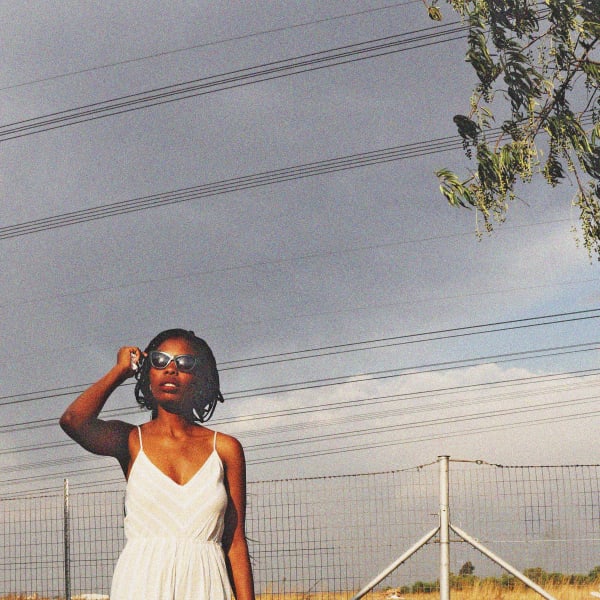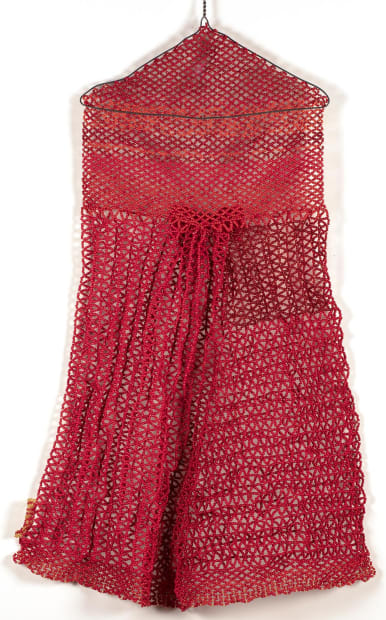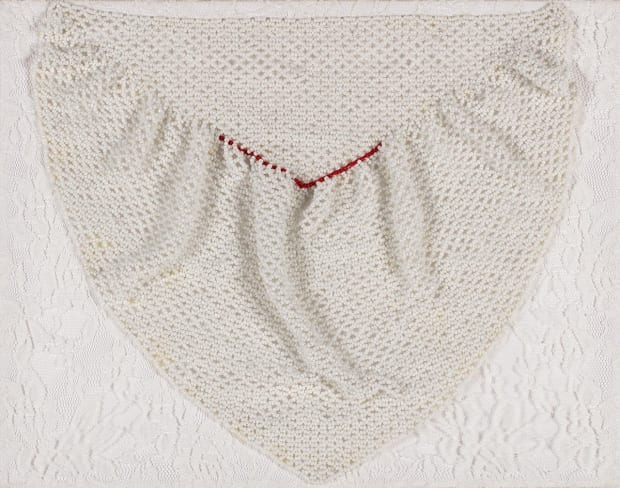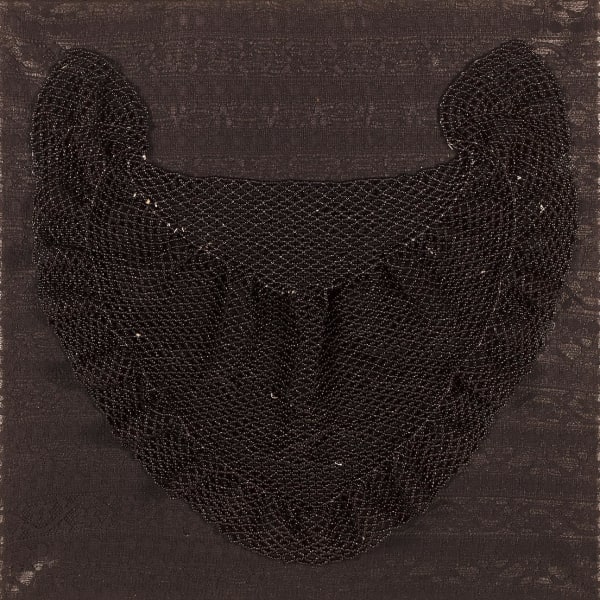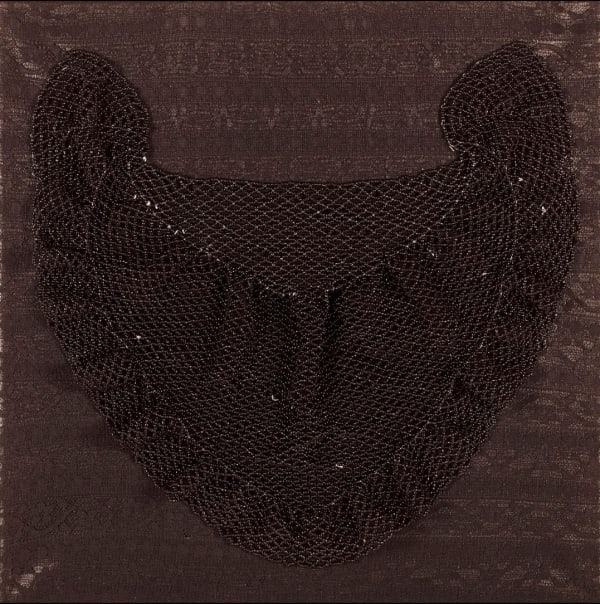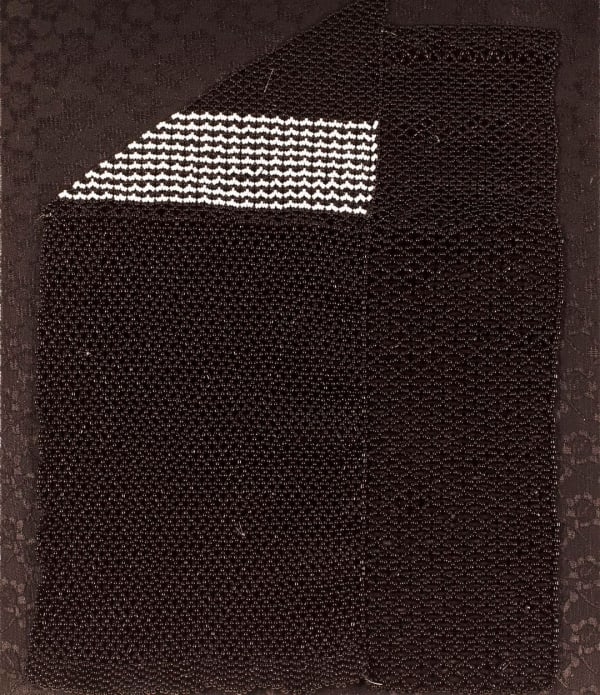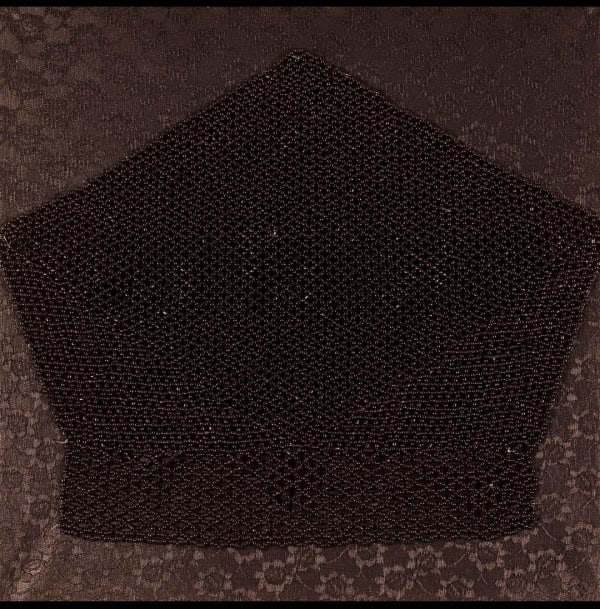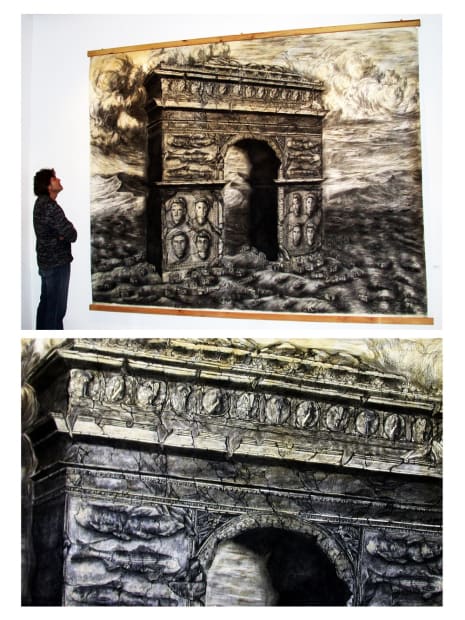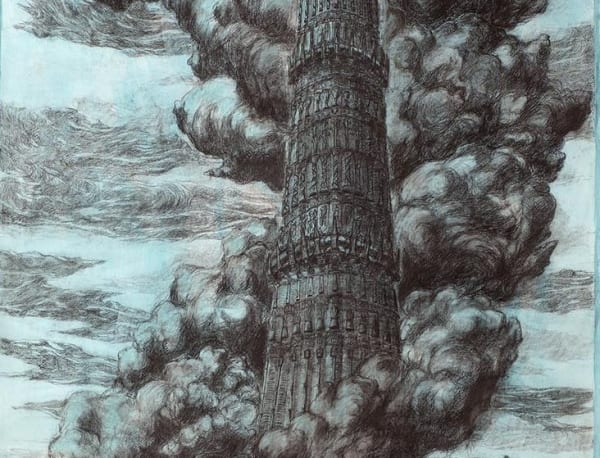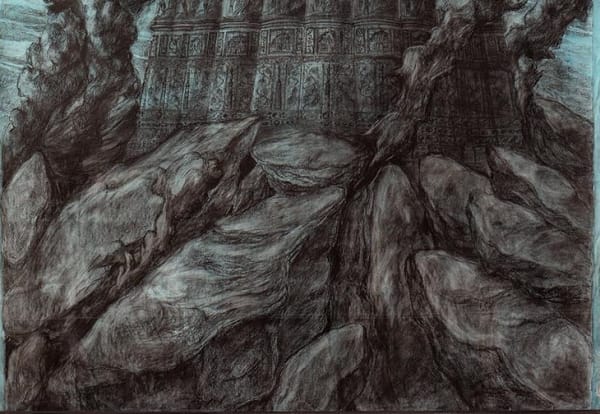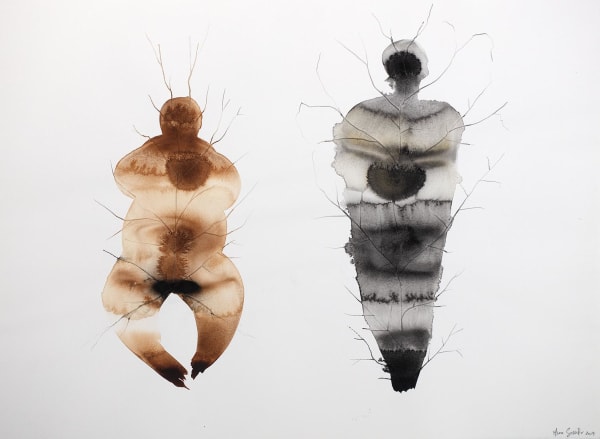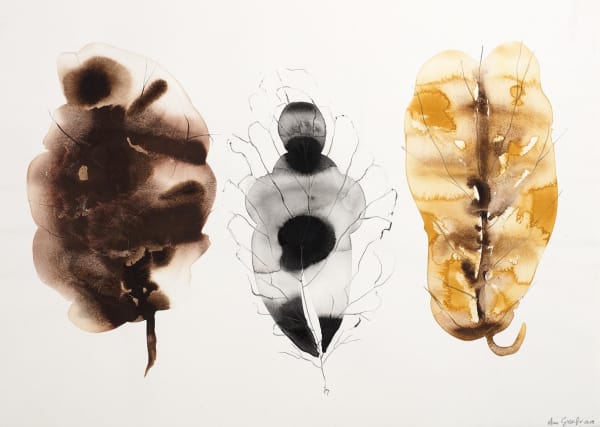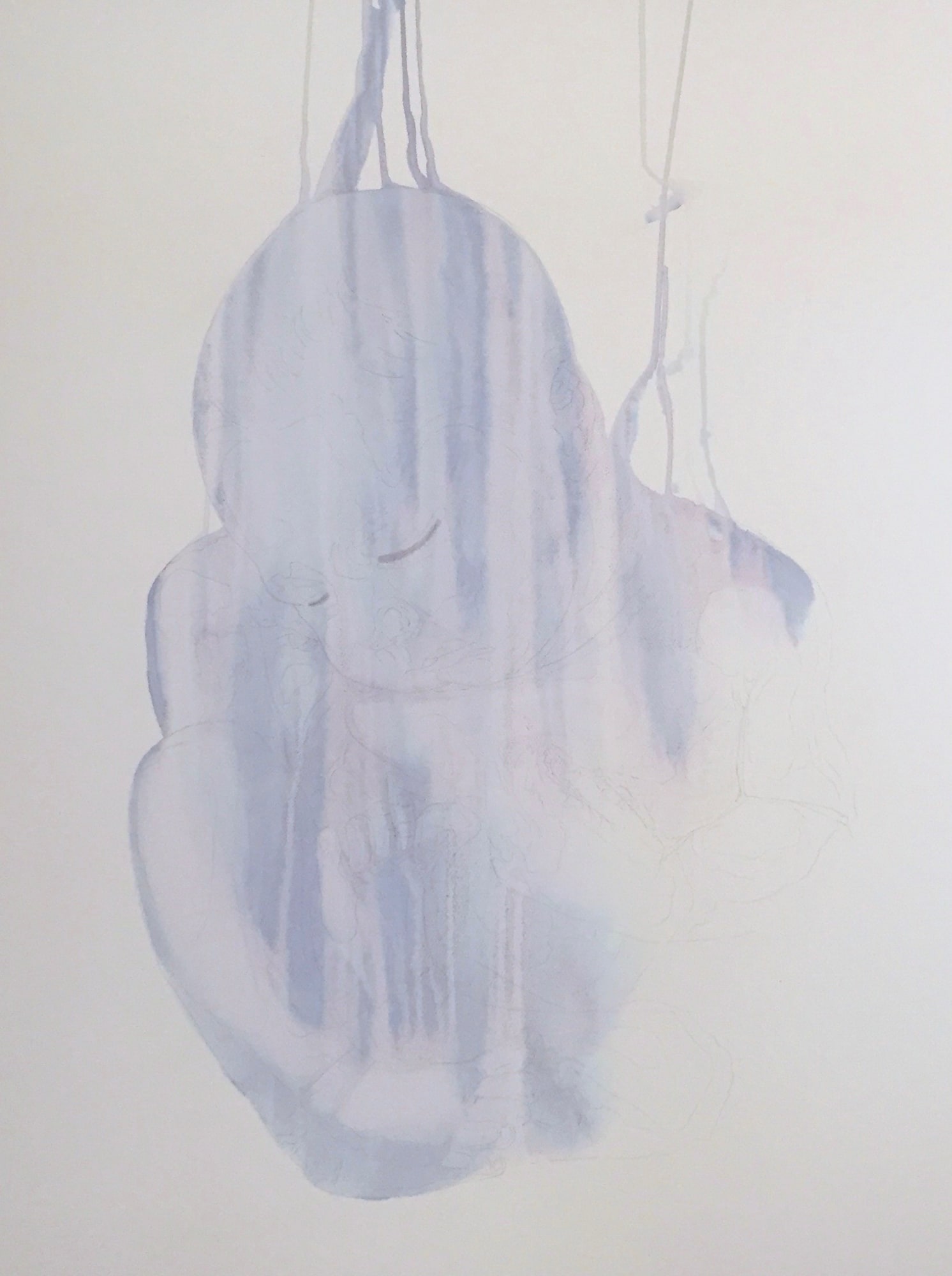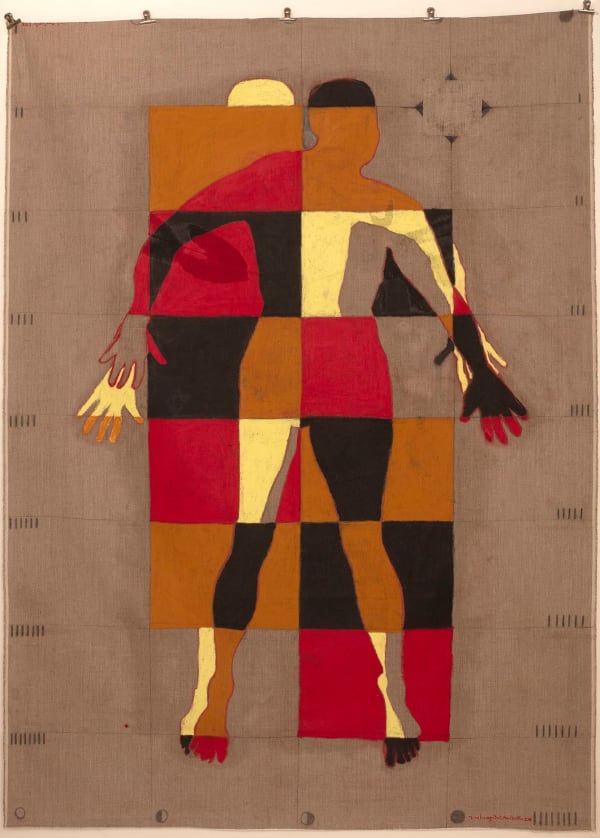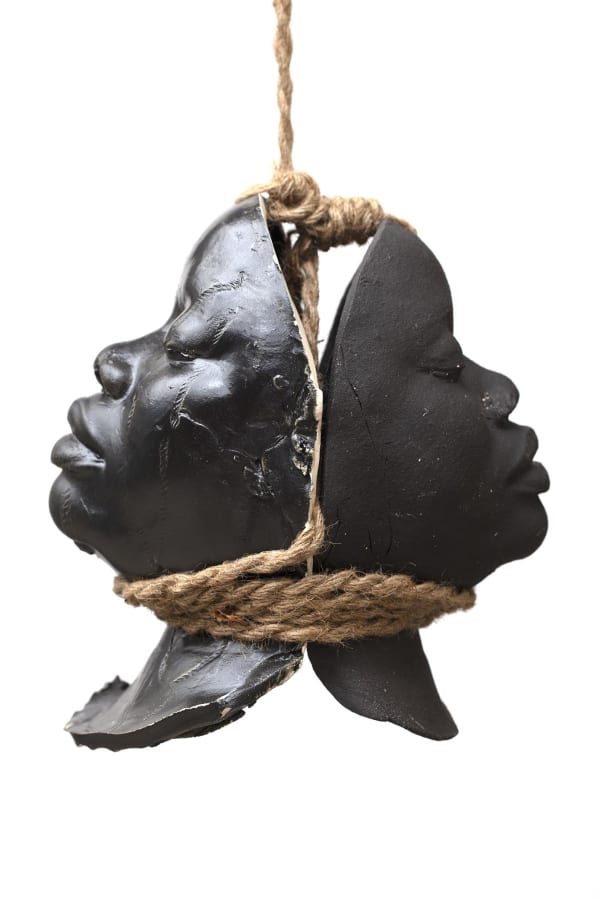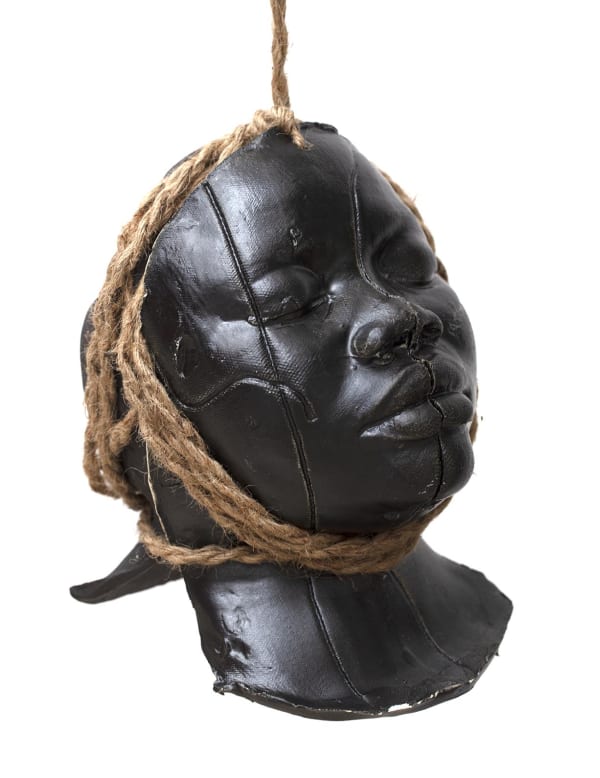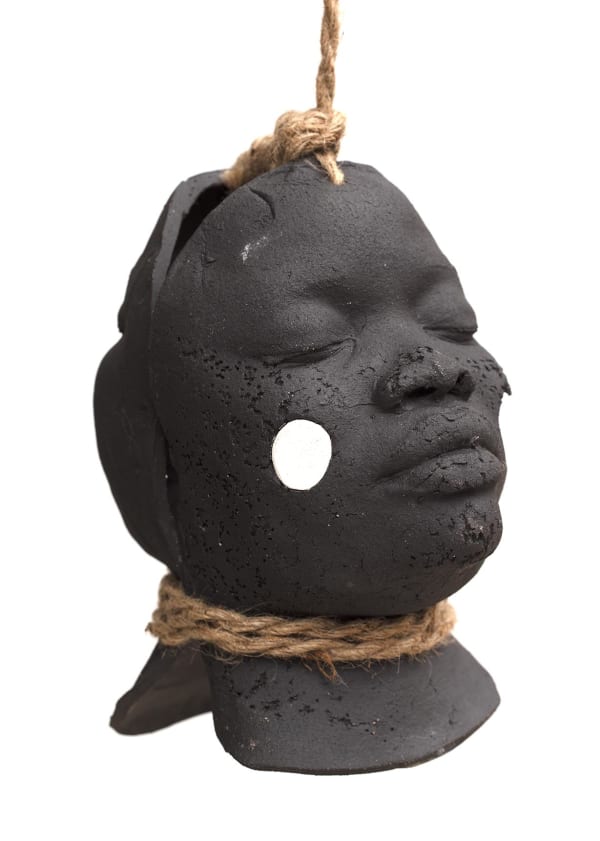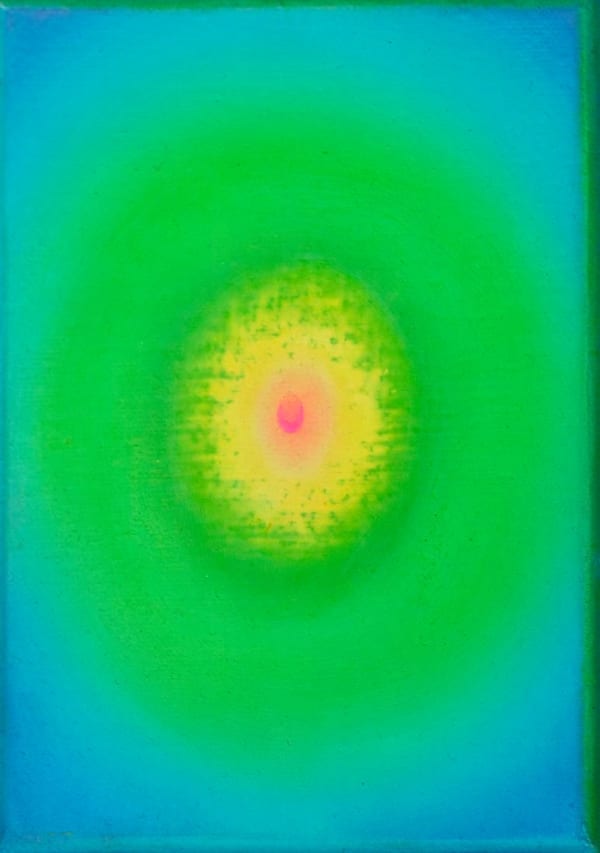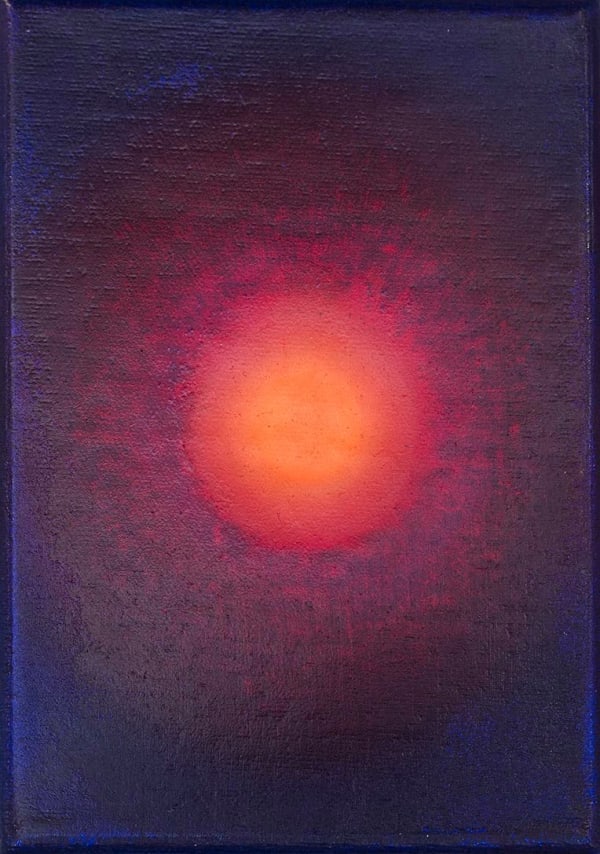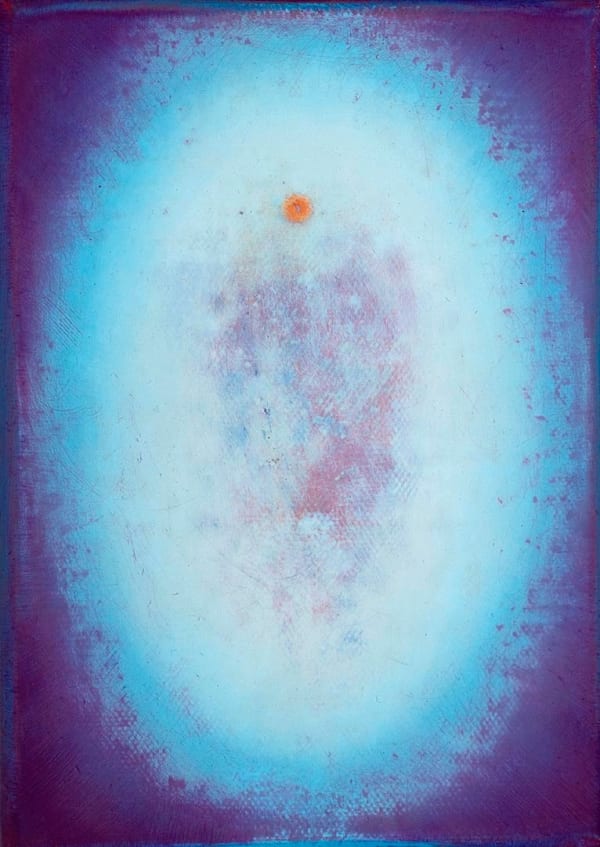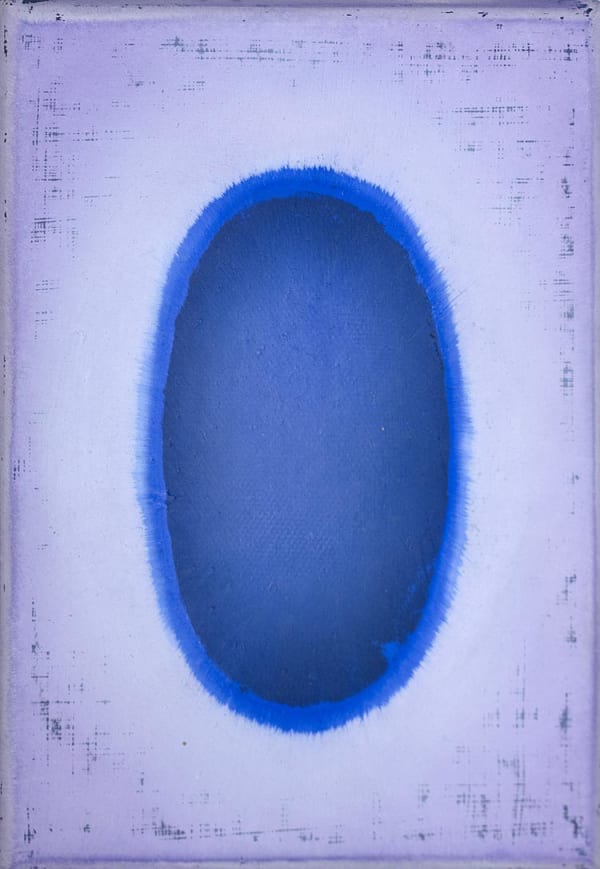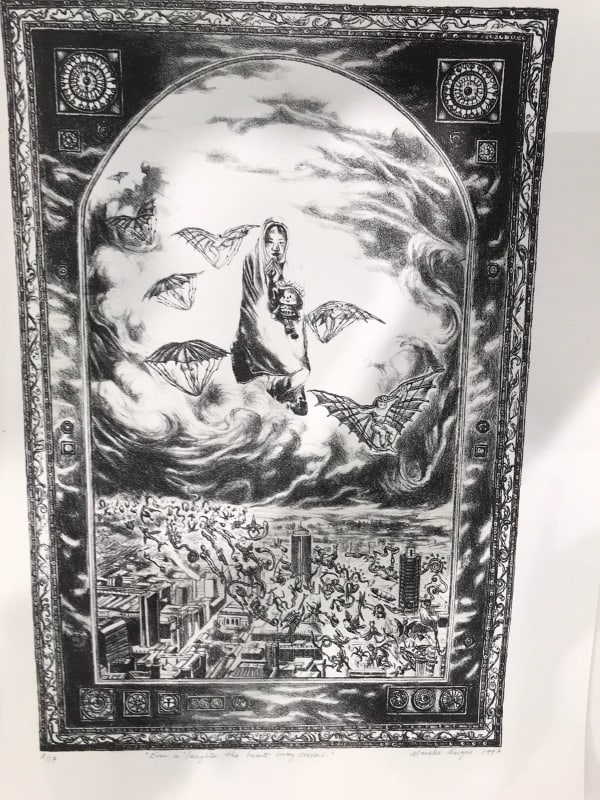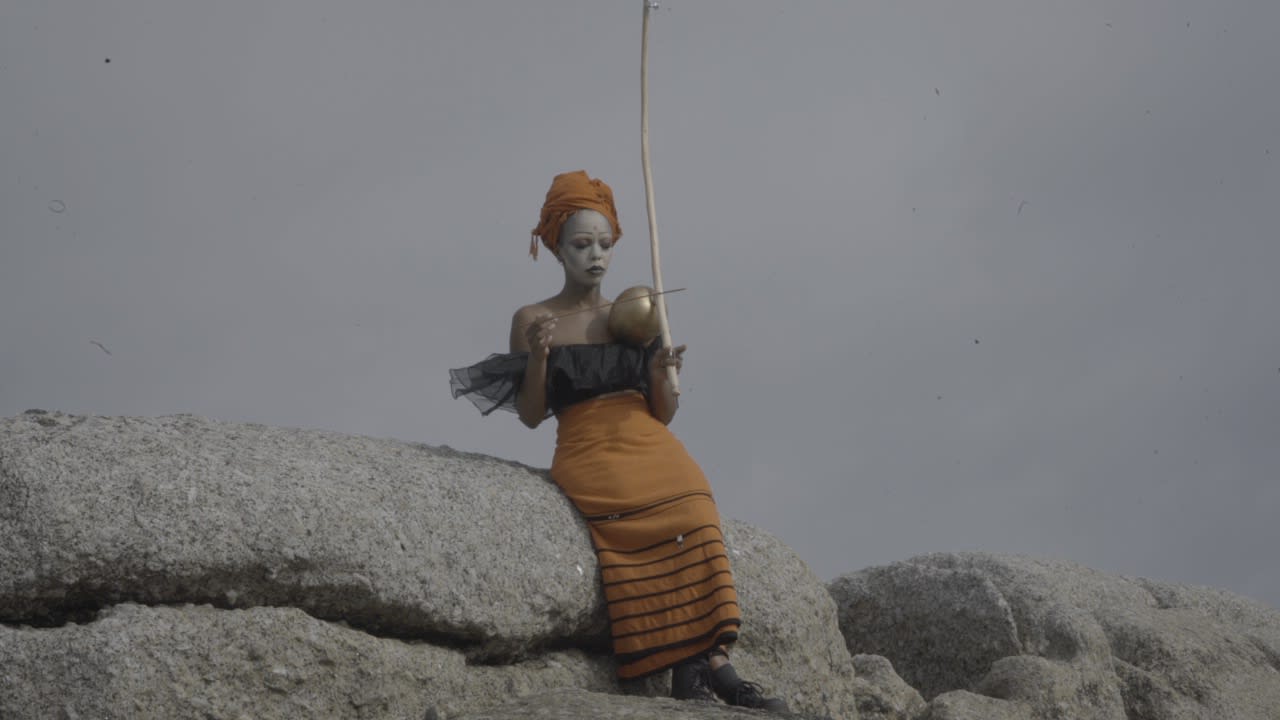Stories of Our Soil is a collection of creations that will be featured at The Melrose Gallery during Womxn’s Month, August 2021. This collection is an amalgamation of womxnhood, nature, our place within it, and how they have been exploited by our society. From an inner space, each of these artists have created raw portrayals of the problems that a colonial capitalist structured society have placed on our shoulders, but, importantly, each also conveys a message of hope on how to overcome these societal ills.
The group exhibition features works across different genres including paintings, drawings, sculptures, photography, printing, video and mixed media. The month-long programme will also include performing arts and conversations.
"Artists have the most incredible ability to reflect to society what a mirror would reveal if held to the same. What then does this work say about who we are having endured an exhilarating bridge from state sponsored separation to democracy, entrenched separation resulting from inspiring policies being held captive by an inept leadership, coronavirus separation entrenched firmly by our suspicious disposition towards science? Where I stand, I see a resilient people intent on documenting every single moment of our history and ensuring future generations have a monument of their roots reflected through sculptural work by womxn determined to rise as they lift and lift as they rise. Ruzy Rusike’s brave curation of works by this ensemble of women in the arts is a love letter to society at a time when the assault on our senses by daily images of despair and ruin can only be countenanced by an incisive tome reflecting the many truths of who we are as womxn. I look forward to few reflecting with others as the Melrose Gallery once again leads in this necessary moment "- Carol Bouwer
-
Stories of Our Soil
Curatorial StatementWe shall be the vessel – the bearer of our rebirth to something greater than we are now.
Nature is the manifestation of the aura and intelligence of a living universe. To be human is to be connected to each other and nature. Everything in nature is energy – a force of constant flux and change.
Human beings, while being a product of nature, are also an anomaly. We may well be the only species that has evolved on the planet earth with consciousness – we can perceive time, understand ourselves from the outside, and can use our creativity to build marvels. As humans, we put great stock in memories and the miraculous nature of remembering. However, this scientific boon in being able to store and cherish memories is more than a simple evolutionary advantage – there is something mystical and ephemeral about our perception of time as a collective. We have shared memories buried deep within from the aeons our forebears have spent traversing this land. Stories of the soil – deep, rich, and fertile – that allow us to understand each other and make deeper connections.
In order to access these memories and see ourselves more clearly, we must take the radical step of looking inward. As stated, humans are the only beings on earth to have this introspective potential – but looking inward can be difficult, especially when society does not necessarily encourage the process for fear of disrupting the present status quo. Delving deep into the human spirit – our collective memories and experiences – can also be challenging. One must first accept the idea of timelessness as central to this understanding, as well as knowing there is a universality we are a part of. So much time is spent focusing on our differences that when we try to focus on our similarities, it seems a drastic act.
We want to take this Womxn’s Month, August, to explore our shared humanity – that which connects each of us through both time and space – and examine how we can rectify the manner in which it has strayed awry. Womxn’s Month was intended as a starting point for reflection, so we must take this opportunity within our different communities to reflect on the stories of our soil through texts, images, and history.
This reflection can even start at the beginning of time. One of humanity’s oldest stories, and one which persists to this day, is the creation of Anthropos, the Primordial Man, Adam Ha-Rishon. Often seen as a biblical parable of Adam and Eve, the story is a microcosm, potentially the first microcosm, of humanity’s relationship with something bigger than ourselves. A black man and a black womxn under the control of something outside of themselves – something that is not human. They were told what to do and how to do it, and when they desired something more than what the authority had dictated to them, they were shunned. This first story reflects our present relationship with our society.
Reclaiming The Dignity of Listening
We have spent our lives being told what is right, correct, and good. We are told that the law, the church, the culture, and the society we live in are good. We are told to stay in our lanes, to accept the role that society has bestowed upon us, to not rock the boat, to not question the authority, to buy the newest thing, and to accept with meek passivity the colonial echoes that continue to affect us down the ages. We hear this incessant chatter, born from a history of colonial capitalism that has percolated through time, but we have missed out on listening to our human spirit in favour of the clamouring tintinnabulation of capitalist greed, racial disparity, and individualistic fame and glory. The outer world is full of a limitless need to colonise and capitalise – it is an ever-hungry machine waiting to have one’s skills and creativity analysed, appraised, quantified, marketed, stolen, and sold. In this era, with its violent cut-throat rhetoric, the need to hide and see without being seen is quite understandable. But to reclaim our dignity, we must listen – we must push past the popular scare-tactics that await us on news stations or social media. We must listen to ourselves and our collective narratives to grow.
Our need to listen to the outer fear-mongering is natural for us – it is a defence mechanism to be wary of danger. Being told to never stray from the path that the colonial capitalist machine has set for us is comforting – we need not fear anything if only we give up our freedom. Breaking out of that mould is about denaturalising this natural behaviour. We must conjure the skill to see without being seen and listen without being listened to by unwanted eyes and ears. Only in looking inside ourselves can we see what a weak façade these socially-made structures are. They are not natural, and it is our duty as humans to tear down these walls that seek to divide and conquer us.Breath
However, it is not only the psychic trauma that our economically-obsessed society has foisted upon us – it is the physical damage to our actual planet. ‘Air’ has associations with freshness, cleanliness, and freedom – we imagine birds soaring through it or inhaling a robust lungful of cool mountain air. However, we live in a world where the air has become poisoned and deadly. This silent killer is seeping into our airways unnoticed. Capitalists are quick to capitalise on the buzzword which is ‘green’, but the world is only being made ‘clean’ because the waste is being pushed to poor neighbourhoods in Africa, coastlines of India, or sprawling unphotographed swathes of the Pacific Ocean. The desire to clean the planet is innate, but there is too much waste to go around. This brings us back to the long story of black womxn as not only cleaners, but as the keeper of a home – able to recognise when a situation is untenable to live and thrive in. This is our world right now.Observing the Difficulty of Rectification
Our role as womxn has been dictated. Our planet has been poisoned. Our mutual, collective bodies have been used. We must confront the subjugated role that we have been placed in by society – a place where our bodies are continuously raped without consequence to the rapist. For centuries, a womxn’s body has been uprooted and torn apart with scars that we all still bear through our collective humanity. There has been an explicit understanding that it is acceptable and tolerated to do violence to womxn, womxn of colour and the Trans community – only then to be told that it is their fault, and they deserve it. We, whose
bodies are violated for pleasure and power, must bear the shame of it rather than the abuser. The legal system has been built with us as an afterthought – this system hailing from such famously misogynist and close-minded societies as imperial Rome and colonial England. Judith Butler’s words ring true when confronting this lofty structure in our society: “When the law is the problem, to whom do you appeal?” Power has been considered and consolidated into the hands of ‘professionals’ – those who purport to be fair and just in their dealings, but made their power and their success on our backs. Rectifying this great power imbalance is, as the above title indicates, wildly difficult. There is no justice right now – we therefore must create what we can through ourselves. We must take strength and use our powers of creation through our collective empathy rather than capitulate in despair to the violence that has been done to us.Transform Our Forms
We must be the harbingers of change in our world, but none of us can do it alone. Nature is in constant flux – it is ever changing, growing, mutating, decaying, and regrowing. We must do the same. Once we have borne the brunt of what has happened to us, we must decide to begin again and change ourselves. We must look towards love, exchange, and fellowship to guide us, collectively, to a place of positivity and growth. We must create new economies of giving, taking, belonging, and being rather than ones which prize individualism and violence.
We shall be the vessel – the bearer of our rebirth to something greater than we are now. Nature, as we have said, is the manifestation of the intelligence of a living universe. We must take on that universe’s calling, recognise our place within it, and transform into something greater than any individual. -
Participating artists
-

Rihandzu Makhubele
-

Aza Mansongi
-

Philiswa Lila
-

Tshepiso Mazibuko
-

Tracy Payne
-

Gladys Kalichini
-

Alka Dass
-

Marieke Kruger
-

Dumama
-

Napo Masheane
-

Olwethu de Vos
-

Ann Mary Gollifer
-
-
Reclaiming The Dignity of Listening
-
-
 Philiswa LilaIsilumo I, 2021Beads, String, lace and canvas35 x 45 cmR 12,500.01
Philiswa LilaIsilumo I, 2021Beads, String, lace and canvas35 x 45 cmR 12,500.01 -
 Marieke KrugerGates of Heaven , 1997Charcoal and tea on fabriano Aquerelle (300g) paper300 x 400 cmR 57,500.00
Marieke KrugerGates of Heaven , 1997Charcoal and tea on fabriano Aquerelle (300g) paper300 x 400 cmR 57,500.00 -

-
 Marieke KrugerTower of God , 1997Charcoal and ink on fabriano Aquerelle (300g) paper150 x 500 cmR 46,000.00
Marieke KrugerTower of God , 1997Charcoal and ink on fabriano Aquerelle (300g) paper150 x 500 cmR 46,000.00 -
Detail Images
-
-
 Alka DassA Small Moment of Pause , 2021raku clay, sugar cane and found wire24 x 10 cmR 3,450.00
Alka DassA Small Moment of Pause , 2021raku clay, sugar cane and found wire24 x 10 cmR 3,450.00 -
Breath
-
 Rirhandzu MakhubeleSmelling the Cow Dung , 2020Earthernware, manganese and copper oxidesTotal of 11 individual sculpture - 23 x 14 x 0.5 cmSold
Rirhandzu MakhubeleSmelling the Cow Dung , 2020Earthernware, manganese and copper oxidesTotal of 11 individual sculpture - 23 x 14 x 0.5 cmSold -
 Gladys KalichiniNarratives of the anarchived and unpopularOil on canvas175 x 460 cm$ 10,350.00
Gladys KalichiniNarratives of the anarchived and unpopularOil on canvas175 x 460 cm$ 10,350.00 -
 Gladys KalichiniRetitled – Ifishimoneka, 2016Ink and oil on canvas170 x 370 cm$ 5,750.00
Gladys KalichiniRetitled – Ifishimoneka, 2016Ink and oil on canvas170 x 370 cm$ 5,750.00 -
 Ann GolliferWoman , 2019Watercolour on paper76 x 57 cmR 12,650.00
Ann GolliferWoman , 2019Watercolour on paper76 x 57 cmR 12,650.00 -

-
 Tracy PayneUntitled, 2016Ink on Fabriano watercolour paper (300g)84 x 109 cmR 34,500.00
Tracy PayneUntitled, 2016Ink on Fabriano watercolour paper (300g)84 x 109 cmR 34,500.00 -
In 2016, for a brief period, I revisited themes explored in NEW LIFE (2011), by this time my palette had shifted from visceral reds and fleshy pinks toward the cooler colours of the spectrum. Egg III was the first work of the series, later to be titled INDIGO CHILD (2016). - Tracy Payne
-
 Tracy PayneRise, 2016Ink, watercolour and bleach on bockingford (300g)101 x 46 cmR 27,600.00
Tracy PayneRise, 2016Ink, watercolour and bleach on bockingford (300g)101 x 46 cmR 27,600.00 -
Observing the Difficulty of Rectification
-
Our role as womxn has been dictated. Our planet has been poisoned. Our mutual, collective bodies have been used. We must confront the subjugated role that we have been placed in by society – a place where our bodies are continuously raped without consequence to the rapist. For centuries, a womxn’s body has been uprooted and torn apart with scars that we all still bear through our collective humanity. There has been an explicit understanding that it is acceptable and tolerated to do violence to womxn, womxn of colour and the Trans community – only then to be told that it is their fault, and they deserve it. We, whosebodies are violated for pleasure and power, must bear the shame of it rather than the abuser. The legal system has been built with us as an afterthought – this system hailing from such famously misogynist and close-minded societies as imperial Rome and colonial England. Judith Butler’s words ring true when confronting this lofty structure in our society: “When the law is the problem, to whom do you appeal?” Power has been considered and consolidated into the hands of ‘professionals’ – those who purport to be fair and just in their dealings, but made their power and their success on our backs. Rectifying this great power imbalance is, as the above title indicates, wildly difficult. There is no justice right now – we therefore must create what we can through ourselves. We must take strength and use our powers of creation through our collective empathy rather than capitulate in despair to the violence that has been done to us.
-

Olwethu De Vos
Big Boys Don't Cry , 2020Pastel, charcoal, staples and copper on board.
150 x 150 cm -
 Olwethu De VosThokoza II , 2020Blow torch, pastel, charcoal, staples and copper on board200 x 100 cmR 36,340.00
Olwethu De VosThokoza II , 2020Blow torch, pastel, charcoal, staples and copper on board200 x 100 cmR 36,340.00 -
 Olwethu De VosThe Brightest Colors Fill My Heart I, 2020Pastel, Ink, Acrylic, staples, copper and steel wool on board.150 x 150 cmR 44,620.00
Olwethu De VosThe Brightest Colors Fill My Heart I, 2020Pastel, Ink, Acrylic, staples, copper and steel wool on board.150 x 150 cmR 44,620.00 -
In order to access these memories and see ourselves more clearly, we must take the radical step of looking inward. As stated, humans are the only beings on earth to have this introspective potential – but looking inward can be difficult, especially when society does not necessarily encourage the process for fear of disrupting the present status quo. Delving deep into the human spirit – our collective memories and experiences – can also be challenging. - Ruzy Rusike
-
-

Rirhandzu Makhubele
I'm awake I'm awake!, 2020Earthernware, Charcoal Clay
26 x 17 x 15 cm -

Rirhandzu Makhubele
I'm awake I'm awake!, 2020Earthernware, Charcoal Clay
26 x 17 x 15 cm -

Rirhandzu Makhubele
I'm awake I'm awake!, 2020Earthernware, Charcoal Clay
26 x 17 x 15 cm -

Rirhandzu Makhubele
I'm awake I'm awake!, 2020Earthernware, Charcoal Clay
26 x 17 x 15 cm -

Rirhandzu Makhubele
I'm awake I'm awake!, 2020Earthernware, Charcoal Clay
26 x 17 x 15 cm -

Rirhandzu Makhubele
I'm awake I'm awake!, 2020Earthernware, Charcoal Clay
26 x 17 x 15 cm -

Rirhandzu Makhubele
I'm awake I'm awake!, 2020Earthernware, Charcoal Clay
26 x 17 x 15 cm -

Rirhandzu Makhubele
I'm awake I'm awake!, 2020Earthernware, Charcoal Clay
26 x 17 x 15 cm -

Rirhandzu Makhubele
I'm awake I'm awake!, 2020Earthernware, Charcoal Clay
26 x 17 x 15 cm -

Rirhandzu Makhubele
I'm awake I'm awake!, 2020Earthernware, Charcoal Clay
26 x 17 x 15 cm -

Rirhandzu Makhubele
I'm awake I'm awake!, 2020Earthernware, Charcoal Clay
26 x 17 x 15 cm -

Rirhandzu Makhubele
I'm awake I'm awake!, 2020Earthernware, Charcoal Clay
26 x 17 x 15 cm
-
-
 Tshepiso MazibukoUntitled, 2020Baryta paper (semi gloss)42 x 60 cmedition of 8R 43,700.00
Tshepiso MazibukoUntitled, 2020Baryta paper (semi gloss)42 x 60 cmedition of 8R 43,700.00History, landscape and the political.
Tshepiso MazibukoThe work presented is a culmination of images from my previous bodies of work. with my work I believe, each series is not completely different from the other as the main themes that are always explored in my work are forever dominant such as history, landscape and the political.
-
Transform Our Forms
-
We must be the harbingers of change in our world, but none of us can do it alone. Nature is in constant flux – it is ever changing, growing, mutating, decaying, and regrowing. We must do the same. Once we have borne the brunt of what has happened to us, we must decide to begin again and change ourselves. We must look towards love, exchange, and fellowship to guide us, collectively, to a place of positivity and growth. We must create new economies of giving, taking, belonging, and being rather than ones which prize individualism and violence.
We shall be the vessel – the bearer of our rebirth to something greater than we are now. Nature, as we have said, is the manifestation of the intelligence of a living universe. We must take on that universe’s calling, recognise our place within it, and transform into something greater than any individual -
 Tracy PayneFragile Nature IX ‘Planet Claire’, 2019Oil on Belgian linen90 x 129 cmR 138,000.00
Tracy PayneFragile Nature IX ‘Planet Claire’, 2019Oil on Belgian linen90 x 129 cmR 138,000.00 -
Fragile Nature
Tracy PayneIn 2018 I began Fragile Nature, a new body of work comprising 16 paintings in total. Continuing my investigation of primordial forms and sacred geometry, I turned my focus to the vesical piscis (Latin for fish bladder). This is the shape that is created where two circles of the same size intersect, also known as the mandorla (Italian for almond) and Yoni (sanskrit). There is no English word to describe this shape. I felt compelled to work with this ancient symbol and to help bring it back out of the shadows, and place it in the broad light of day.
Ashraf Jamal, in his essay states, “A shape and form typically considered feminine – Yonic - it speaks to the paradoxical relationship of surface and depth. Another word for Yoni is Pindika, which, curiously, is aniconic – not a definable form, but that which confounds form, which speaks to a more mysteriously generative source. It is this aniconic register which reveals Payne’s quest. She is not merely intrigued by shapes and forms for their own sake, but also their womblike inscrutability.”
Dr Jean Benedict Raffa explains, “...the mandorla represents the sacred divide between spirit and matter, masculine and feminine, self and other. The space wherein these apparently irreconcilable opposites overlap is an image of hope for our torn world, a healing place where we can reconcile our struggles with life and each other.”
-
Deep Forest
-
Ultraviolet Light and Deep Forest
Tracy PayneIn my two compositions, Ultraviolet Light and Deep Forest, I offer a meditation on form and colour. Each is a selection 9 out of 20 paintings, they come from an ongoing series of works through which I explore colour and primordial shapes; the circle, oval, lingam and yoni.
Taking a meditative approach, I spend time in preparing the ground upon which I paint. For most of the works I used canvas as my support, for a couple I stretched silk over the canvas for a finer finish and for others I use a thick weave polish linen. Each painting has its own journey and makes its own demands in order to become a unique work. With some I painted up to 10 layers of oil, primer, which I then sanded down to a smooth alabaster- like finish before appplying oil color. In others I first primed with black gesso and then with white primer which I then sanded back to reveal the black, others I applied gold leaf and others I created a thread-like texture using acrylic paste and hacksaw blade.
My whole process involves adding veils of color, allowing for drying time, and then sanding areas away, revealing the texture and color of underlying layers. Sometimes I sand all the way back to the white of the oil ground so as to reveal the light again. I seldom add white to lighten my colors, instead I use the white of oil ground to reflect the light back through the veils of transparent hues, much like a stained glass window. I may repeat this process many times over until the paintings ask no more of me.
-
Ultraviolet
-
In this series of paintings, I am attempting to capture the color and evoke the mood of ultraviolet light. Working predominantly with the upper aspect of the color spectrum, using ultramarine blue, unltramarine violet and a little bit of magenta. These colors have a cooling effect and balanced with black and white evoke both power and serenity. The shapes assume a three dimensional form or act as portals, evocative of the principles of the masculine (lingam, yang, light) and the feminine (yoni, yin, dark) - Tracy Payne
-
 Olwethu De VosA Beautiful Shit Storm I , 2020Charcoal and copper on board.100 x 150 cmR 46,000.00
Olwethu De VosA Beautiful Shit Storm I , 2020Charcoal and copper on board.100 x 150 cmR 46,000.00 -
Womxn Program
-

-
-

Pushing Portals
DumamaClick here to registerPushing Portals will be an online perfomace asWe can create a trailer, but not publicize or circulate the video. My ideal outcome would be for the video to be commissioned by a museum or institution within your networks that would share the Pushing Portals experience as an artwork.Secondly, but most importantly, we would like to generate awareness about and support for our living legend, my uHadi teacher Madosini Lathozi. -
Please help us reach our goal by giving that which is within your capacity - sharing/spreading the word, donating, volunteering time, expertise or anything that you feel would be of service to Umakhulu.
Madosini: Musician, teacher, living archive and international cultural treasure. This icon of South African indigenous music has gifted us with not only the joy of her music, but also the preservation of national heritage - a wealth of knowledge for future generations to inherit.
This is a call for support! You can help!
In order to fulfil Madosini's wish to have a house built at her ancestral home in the Eastern Cape, we have set a fundraising target of R1,100, 000.
Please join us in our efforts, and help to provide a living legend with the dignified retirement she so rightly deserves.
Alternatively you can do a direct EFT here
Banking details linked with the campaign:
Account Name - The Property Foundation
Bank - Standard Bank Claremont
Account No - 310 803 195
Branch Code - 025 109
Proof of payments to - madosinifundraiser@gmail.com
Every donation will receive a free digital download of the album Modokali by Amathongo, sent to you via email within 24 - 48 hours.
(Listen here: https://rootspring.bandcamp.com/album/modokali)
If you would like a section 18A tax exemption certificate for your donation please email madosinifundraiser@gmail.com
to request this.
Follow the campaign on Facebook:
-

Queer Is
Click here to registerRationale: QUEER IS, is a short film that captures all that Queerness is, written, shot and created by Queer People and played by Queer People for Queer People. The film says, “being Queer is more African than being Queerphobic.”
The short film is a political stance against the violence, stigmaand discrimination against members of the LGBTQ+ Community.This violence has caused fear amongst individuals who identify as queer andare unfortunately unable to freely embrace their true identity within society.Misinformation, has led members of African communities to label any one other than heterosexual as heathens, ungodly and not African, when in fact, Queerphobia is the epitome of being un-African. African soil is built from bloodshed, yet the inhabitants of this continent have overcome adversity andbequeathed unity, and loyalty amongst their families and communities.
The film ‘Queer Is’ aims to unearth the misinformation regarding Queerness and unite all Africans, irrespective of their sexuality.
Discussion Topics:
Theophillus Masilela:
The film’s root of creation, its intention and the heritage of queerness within African ancestry.
Sbusile Mhlanga:
How Experimental Imagery was used to interpret the film’s Spoken word; and the use of symbolism to illustrate the visual concept and world of the story.
Siya Phungula:
The use of dance as a catalyst for the climax and a historical form of protest within the film.
Mmapaseka Steve Letsike:
The current dilemma of violence and discrimination against members of the LGBTQ+ community in Africa - And further unravelling how we, as a society can heal victims of Queerphobia and teach those who bring hate and violence. -
Nature is the manifestation of the aura and intelligence of a living universe.
To be human is to be connected to each other and nature.
Everything in nature is energy – a force of constant flux and change.




